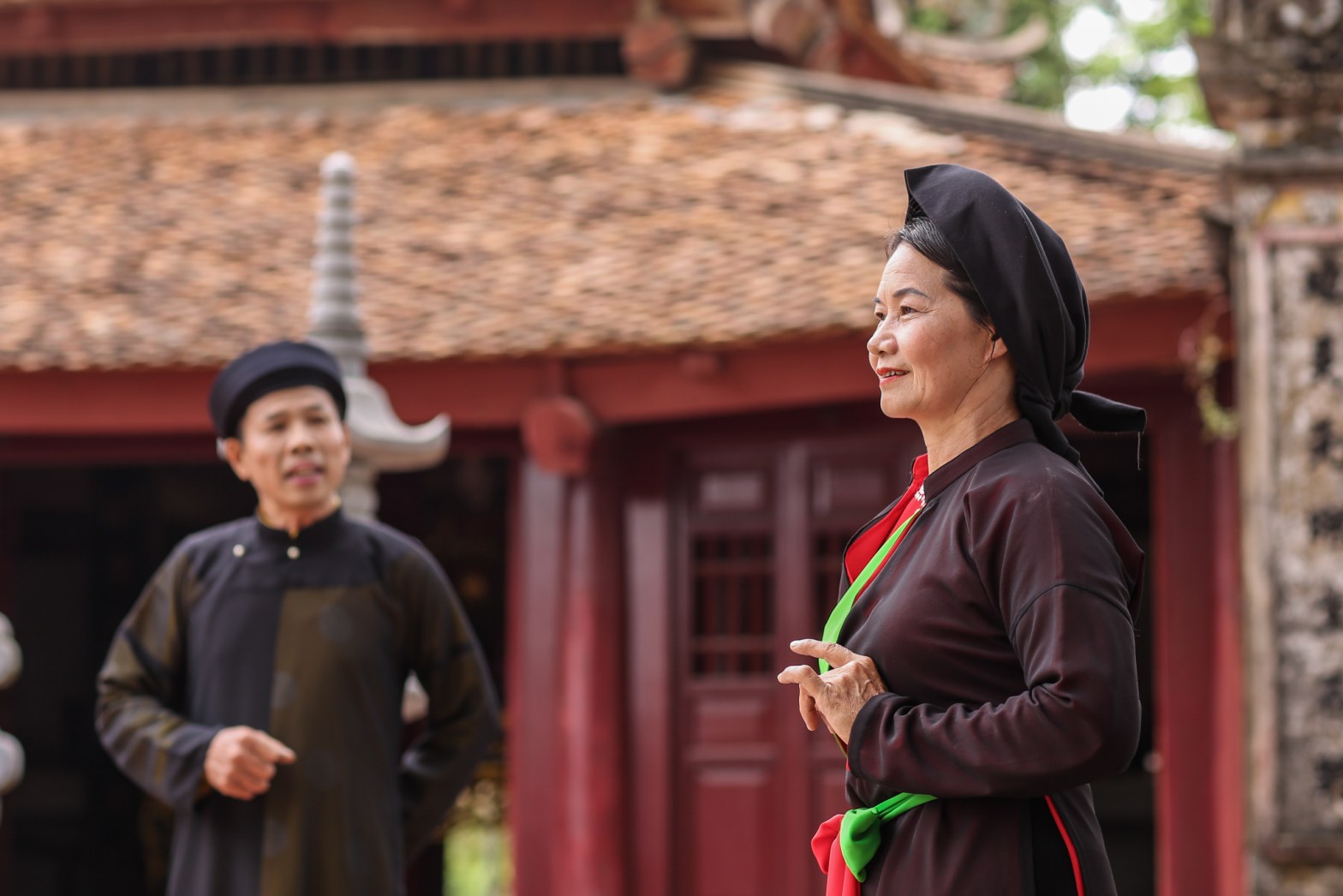Hanoi (VNA) – Referring to quan ho (love duet) singing, many people only think of Bac Ninh as a geographical indication. However, right on the northern bank of the Cau River, the land of Viet Yen is also considered one of the cradles of charming love exchange songs.
Viet Yen is also the only district of Bac Giang province having five ancient quan ho villages named in the list of 49 Kinh Bac quan ho villages honoured by the United Nations Educational, Scientific and Cultural Organization (UNESCO). Therefore, “how to preserve and transmit the love exchange folk songs to exchange love on the Cau River to the next generations” is always the question that makes male and female quan ho singers in Bac Giang province in general and Viet Yen district in particular are concerned about…

Journey to “decode” the ancient quan ho in the north of Cau River
Since being recognized as an intangible cultural heritage of humanity in 2009, the ancient quan ho has received more attention and had a strong “return” in the community life.
“Even so, not everyone knows and understands the practicing space and the ways of calling and singing of the ancient quan ho,” said Dam Thi Mui, 63, from the ancient quan ho village of Noi Ninh, Ninh Son commune, Viet Yen district. There is a quan ho area in the north of Cau River The communal house of Noi Ninh village (Viet Yen district, Bac Giang province) was unusually bustling in an autumn morning. From the roads to the communal house, the male and female singers wearing four-panel traditional dresses, turbans and conical hats flocked to the large yard. The appointment with guests from distance who want to study quan ho made them more eager and anxious than ever.

Bitter chewing a piece of betel, female artisan Dam Thi O (from the Noi Ninh ancient quan ho village, Ninh Son commune, Viet Yen) declaimed a sentence in the song “Ban den choi nha” (The friend comes to visit my house). Despite being more than 80 years old, the voice of the senior artisan is still deep and very sweet. Pausing for a moment, she whispered: “Many people often misunderstand that Quan ho is of only Bac Ninh. But in fact, it is the common heritage of both the northern and southern banks of the Cau River.” According to her, currently among 49 ancient quan ho villages counted during 1969 – 1971 on both the northern and southern banks of the Cau River, Bac Giang has ancient quan ho villages such as Huu Nghi, Gia Son, Noi Ninh and Mai Vu (Ninh Son commune) and Sen Ho (Nenh township).

In 2006, to prepare a dossier to submit to UNESCO for recognition of quan ho as an intangible heritage of humanity, the then Ministry of Culture and Information (now the Ministry of Culture, Sports and Tourism) assigned the National Institute of Culture and Arts Studies to coordinate with the Department of Culture and Information (now the Department of Culture, Sports and Tourism) in Bac Giang province to study this form of art. At that time, the management agencies and researchers determined that, besides these five villages, Viet Yen district also boasted 13 other villages that gather elements of an ancient quan ho village. In addition, in Bui Kep and Bui Ben villages (both in Yen Lu commune, Yen Dung district) and Cam Xuyen village, Xuan Cam commune (Hiep Hoa district), many people have been found to be quan ho artisans from their youth. The survey results confirmed that the quan ho space of the northern bank of the Cau River is very large, preserving many values of the unique quan ho cultural heritage of the Kinh Bac region.
Old artisans like Dam Thi O still remember the ancient ways of singing. It is like an underground blood vessel flowing in them, connecting the northern and southern banks of the Cau River, which has kept the quan ho culture of the Kinh Bac region for hundreds of years. Love reflected through the songs “Every time when a guest comes to the house / Burn charcoal and make tea to invite the guest / This tea is very precious / Each person receives a cup to make me happy…” Ending the sentences, Dam Thi Mui said that quan ho is not just a form of folk performance (the form of love exchange singing between male singers wearing long dresses and turbans and graceful female singers with four-panel traditional dresses and conical hats but also shows the behavior of Kinh Bac people.

“For generations, the people here have passed down the saying: ‘Respecting each other for the sentiment, loving each other for talent.’ That is the love of the quan ho people. They love was cherished, preserved, and turned into the ways of saying and living of the people in Kinh Bac, making an important contribution to the vitality and spread of quan ho in contemporary life,” Mui said.
The people in Kinh Bac in general and Viet Yen in particular treasure the word “love.” Therefore, all gestures and words are made very carefully and considerably. This is subtly expressed in each sentence of the more than 200 ancient quan ho songs (with thousands of versions) being preserved in the community life.
Continuing the story, Mui said, the seniors in the region also do not remember when the custom of singing quan ho started. Stories and legends about the origin and the time of birth of quan ho have been passed down from generation to generation. Among them, the assumption that quan ho was born from the custom of setting up twinning ties among the villages worshipping the same tutelary god is the most popular.
In addition, the seniors also pointed out that for hundreds of years, through many changes of the history, quan ho has still existed and gone deeply into the life of Kinh Bac people.
For hundreds of years, through many changes of the history, quan ho has still existed and gone deeply into the life of Kinh Bac people.
In some specific periods (1950s-1960s), due to historical conditions, many traditional cultural activities that attracted large numbers of participants (including quan ho singing) were not popular and frequent.
“Quan ho has never died. When there were no quan ho singing activities, the male and female singers still sang the songs during the production and plowing or whenever the guests come to visit their house, ceremonies, weddings…). Even, the mothers still lulled their babies by quan ho songs. My parents used to tell me that during the war, when they came from the underground shelter, Kinh Bac people taught each other the tunes passed down by their forefathers,” said Nguyen Van Dac from the Noi Ninh ancient quan ho village, Ninh Son commune, Viet Yen district.
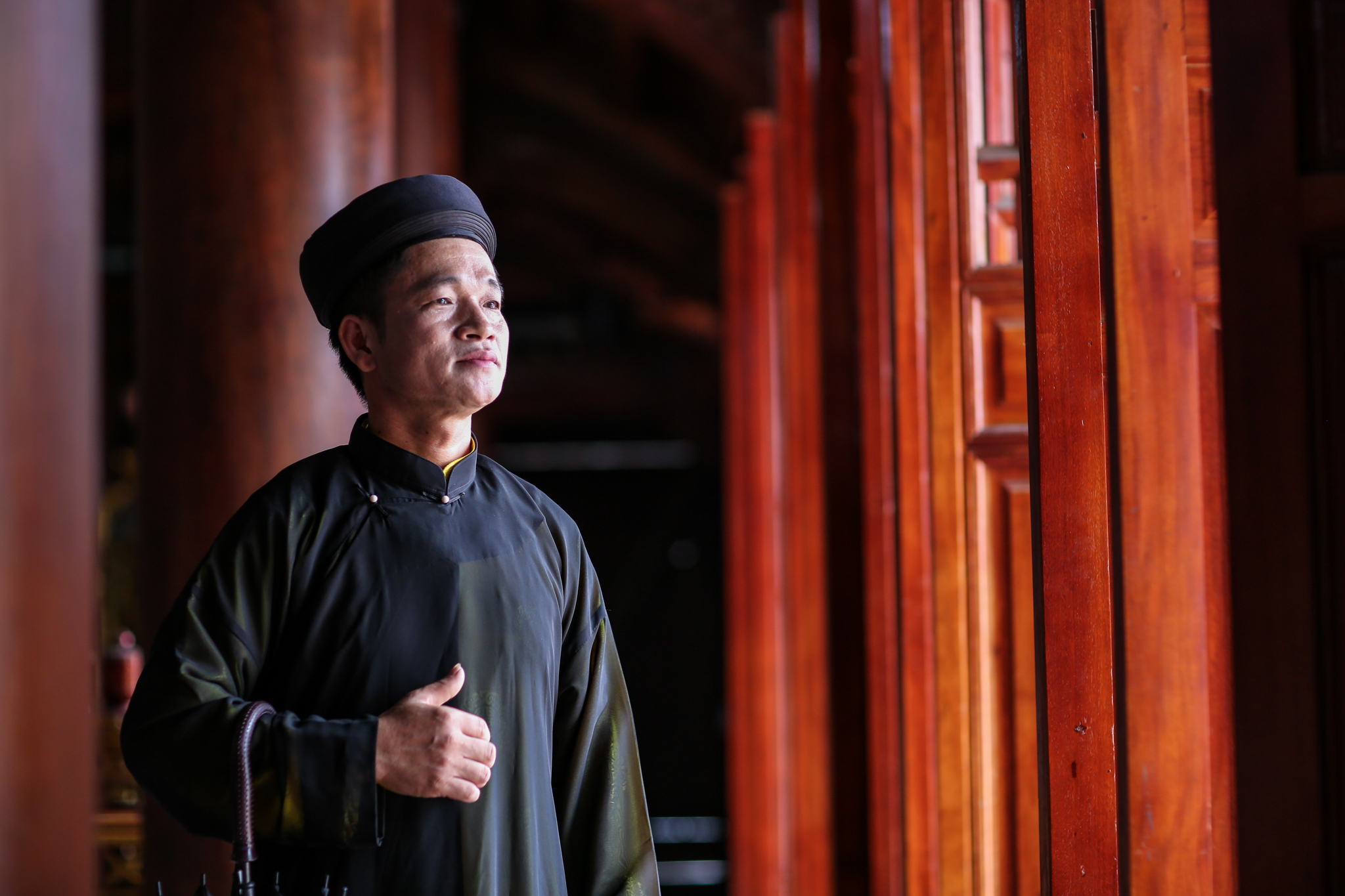
Over 70 years of living with this type of folk song, Dam Thi O said that like many other male and female quan ho singers born and growing up in the quan ho “cradle”, she heard those deep lyrical melodies when she was a baby. Initially, she learned short sentences and by the age of 10, she was able to sing many old songs.
In her memory, in the early decades of the 20th century, life was still difficult. The people saved each rice seed and each piece of potato… “Yet, because of the passion for quan ho, I ruined countless meals of the whole family. Many times, when I was cooking in the kitchen, hearing my grandfather teaching my father the old quan ho melodies, I ran up to the house, hiding behind the door to ‘study.’ When I was happy and excited at hearing, knowing and remembering a few sentences, then… the kitchen was full of the smell of burnt rice and potatoes,” Dam Thi O recalled. How to “play” quan ho The ancient quan ho does not use accompanying music. “The ‘í … ah … oh …’ are the notes that connect this sentence with the other. The quan ho lyrics are the confidence of the male and female singers. From the vocal timbre, listeners can understand the feelings and mood of the singers,” shared Nguyen Van Dac.
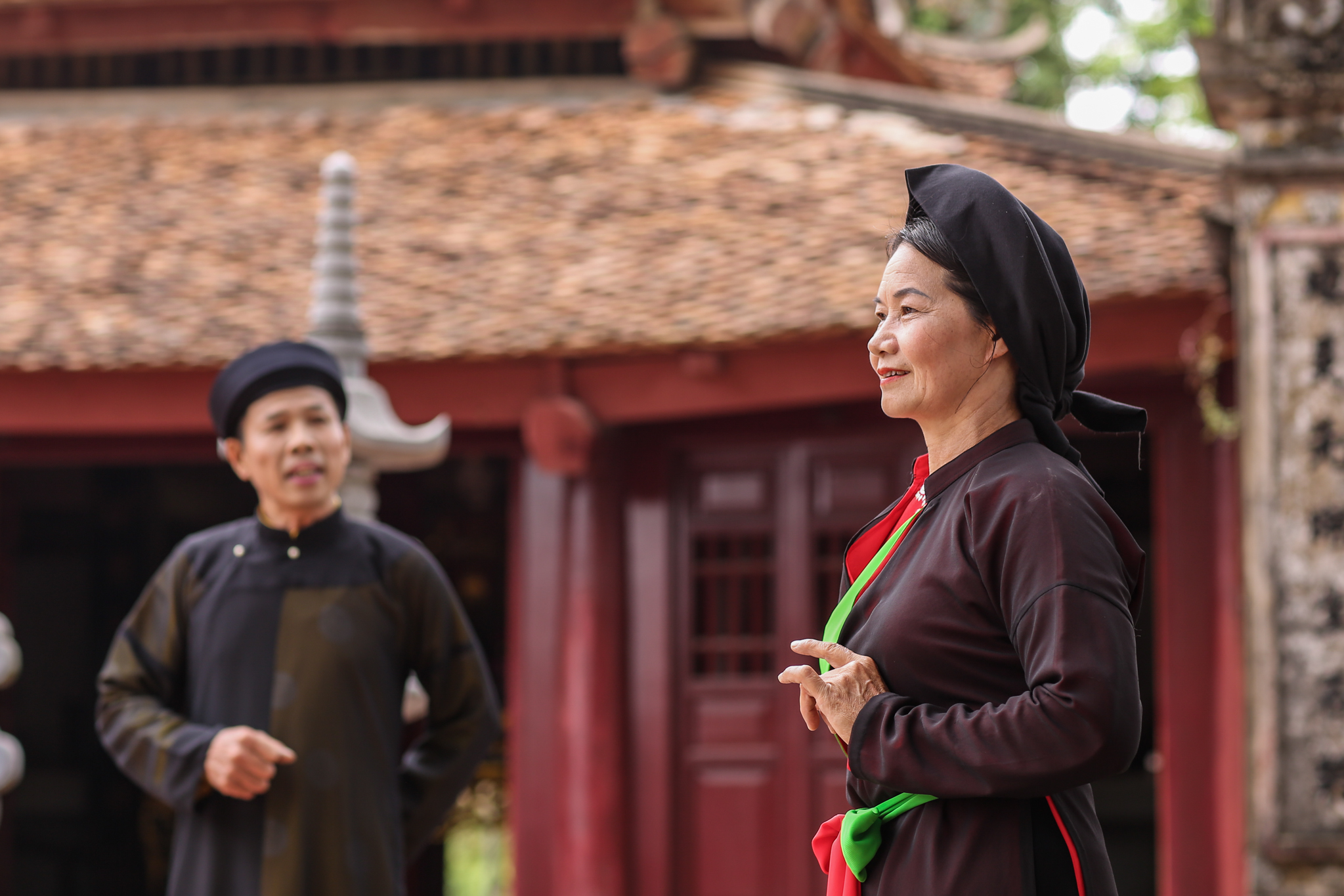
In addition to memorizing the words, quan ho learners also have to practice breathing and how to ligature and hum a tune, and then follow the right techniques. Quan ho people have to know “hu la”, “la rang” and “la ban” tunes and practice different ways of singing the folk songs.
The quan ho artisans in Viet Yen said that in the past, the ancient people did not call it “quan ho singing” as it is today, but “quan ho playing”. Many people can sing quan ho but “playing” quan ho, not everyone can do it because ‘playing’ quan ho bears an ethereal and elegant nuance, with the echoing lyrics that are generous, amusing and passionate,” said Dam Thi Mui.
In the past, the ancient people did not call it “quan ho singing” as it is today, but “quan ho playing.”
According to Mui, the ancient people called “quan ho playing” because in the past, the villages were often twinned with each other and invited male and female singers to join singing exchanges. Groups of male and female quan ho singers in the villages were often called “bon quan ho.” The head of each “bon quan ho” was called the “ong trum” (male boss) and “bat trum” (female boss).
An ancient quan ho singing session often has three stages. In the first stage, male and female singers often sing in accordance with the ancient rules and the old way. In the second stage, singers use popular melodies in daily life. The third stage requires a way of lyrical singing.
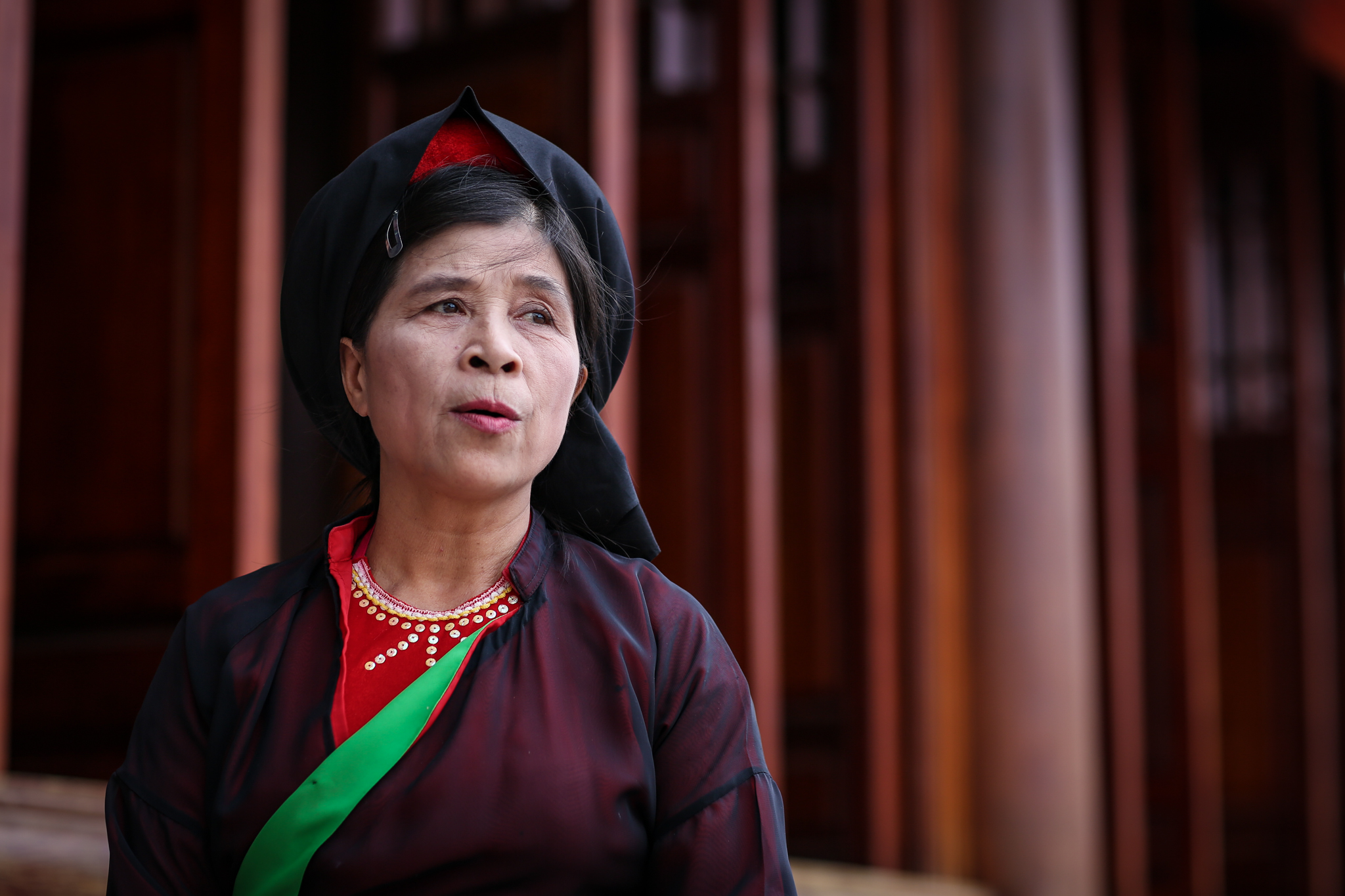
Moreover, the ancient people did not call “quan ho songs” as today. Instead, they called “sentences.” Usually, each male or female singer memorizes from 50 to 70 “sentences,” while each artisan “memorizes” hundreds of “sentences.”
One of the traditional practicing spaces of the ancient quan ho is the “nha chua” (the place where male and female singers from distance are taught and welcomed). “Previously, my family lived in a house with four rooms. My father spent one room as ‘nha chua”. There were always a betel container, a lime jar and other items displayed in the old fashion. Generations of male and female singers came here to study and hum quan ho sentences. In particular, in every meeting, the groups of quan ho singers often held singing sessions that lasted several days. Since then, the custom of “ngu bon” (sleeping together) has also been formed and handed down through many generations,” Dam Thi Mui said. Today, terms such as “ngu bon,” “quan ho bon,” “ong trum,” “ba trum” … are rarely used even though they reflect unique, distinctive beauty and long-standing values of the quan ho culture in Kinh Bac in general and Viet Yen district in particular./.

Quan ho: A string connecting the community
In Kinh Bac in general and Viet Yen district in particular, quan ho has become a string connecting the community for many generations.
Nguyen Duc Hien, Director of the Culture and Sports Centre of Viet Yen district (Bac Giang), said that the quan ho folk songs have not only been ingrained into the mind but also become an indispensable spiritual dish for people in ancient quan ho villages as well as all villages and communes in the northern bank of the Cau River. In particular, this type of folklore is indispensable at traditional festivals. “Singing quan ho after retiring” Hien said that today, Bac Giang still retains about 200 ancient quan ho tunes. Besides collecting old tunes and songs, quan ho teachers also compose and write new lyrics suitable to the ages to teach the younger generations. However, in the ancient quan ho villages such as Noi Ninh (Ninh Son commune, Viet Yen district), most of the members learn the old lyrics. Doan Thi Mui, head of the Noi Ninh quan ho club, said that in the past decade, quan ho has seen a “comeback” and developed more strongly in the community life. In 2000, the club had only seven members but now the total number of its members is about 30 people, of various ages (from 8 to 94 years old).

“The club organizes activities on every Saturday and Sunday in the form of seniors teaching their descendants and people who know many songs teaching those who know fewer. All of them are volunteers. No one received any financial support. Moreover, many singers who work away are ready to take a leave to join when the club has activities. Because of that, quan ho stays firm in the life of the Kinh Bac people,” Doan Thi Mui said.
To illustrate, Mui pointed at each of male and female singers passionately singing in the communal house and then muttered: “This morning when hearing of a delegation to visit, many male and female singers who were working in the field, also came here to sing. Some even gave up their workday worth 600,000 VND. Everyone is passionate about quan ho.”

Male singer Nguyen Van Dac slightly stroked his dress and said: “Every time we have the opportunity to sing and play, we are extremely excited. No matter how busy we are, we all call each other to set up a troupe. If we do not sing, we will feel uneasy all day long. ”
The gray-haired singer even told that in the village, there was an old man who was sick but when hearing quan ho songs from the yard of the communal house, he still asked his children and grandchildren to take him there. “Quan ho is like an addictive substance for many generations of Noi Ninh people,” Dac stressed.
Quan ho is like an addictive substance for many generations of Noi Ninh people.
In Noi Lat village (Yen Son commune, Viet Yen district), artisan Duong Thi Oanh is also a volunteer in preserving the ancient quan ho for many years. This 52-year-old female singer is currently the head of the village’s quan ho club. She said without the passion, she will feel hard to overcome all the pressures of everyday life.
The male and female singers come together with love and passion for quan ho. “Without that love, we cannot overcome the pressures and obstacles in life. Joining the quan ho club means that we have to put aside many household chores. Moreover, there is no financial support for those engaging in the movement,” said Nguyen Duc Uoc from Ha Lat village, Yen Son commune, Viet Yen district. Quan ho is growing day by day In order to preserve the ancient quan ho, the male and female singers in Viet Yen are forced to become unwilling collectors. Nguyen Van Dac explained that the peculiarity of the ancient quan ho is to use old lyrics that are quite rarely used currently. Therefore, only the senior artisans can remember and memorize them.
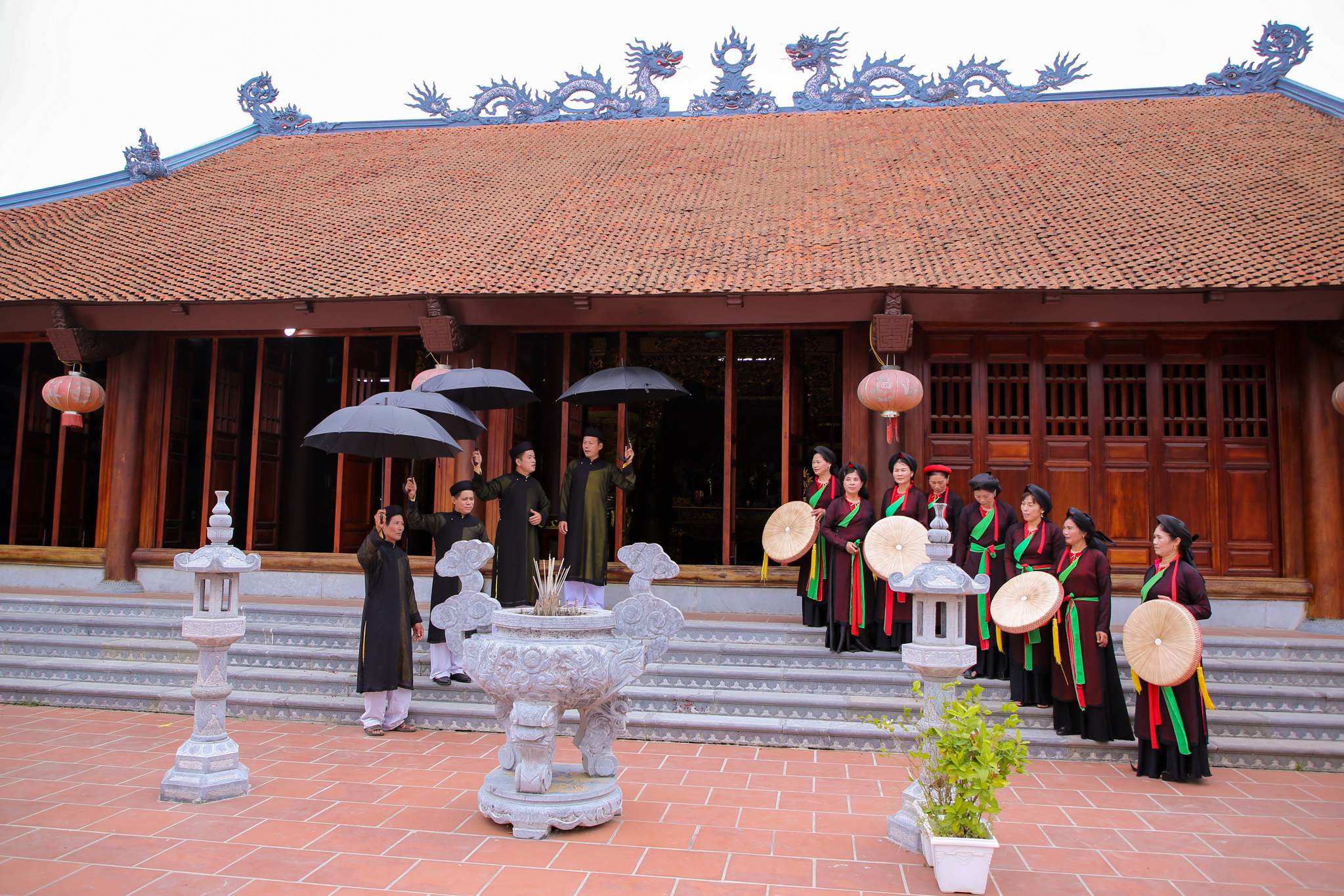
“The old people are almost illiterate. So we had to come to their houses, ask them to sing and record each word,” Dac said.
He does not remember how many times he had to knock on the doors of the elderly’s houses in the village to ask for hearing and recording the ancient quan ho sentences. After 10 years of going to every small corner of Noi Ninh and many other ancient villages of Viet Yen, his group has recorded nearly 200 ancient melodies. According to artisan Dam Thi Mui, it may take up to 10 days or half a month to memorize an old quan ho sentence. And it will take such time for the male and female singers to sing and “play” it confidently. Luckily for the male and female singers like Dac, in the past five years, the movement of “hat chieu” – singing quan ho in the old style between clubs and villages has flourished. “Hat chieu” is an ancient form of quan ho singing that is often organized for villages to compete with each other, Dac said. Artisans consider “hat chieu” the pinnacle of quan ho when the participants must have a great deal of knowledge and understanding about the ancient quan ho. Each sentence will have several corresponding responses.
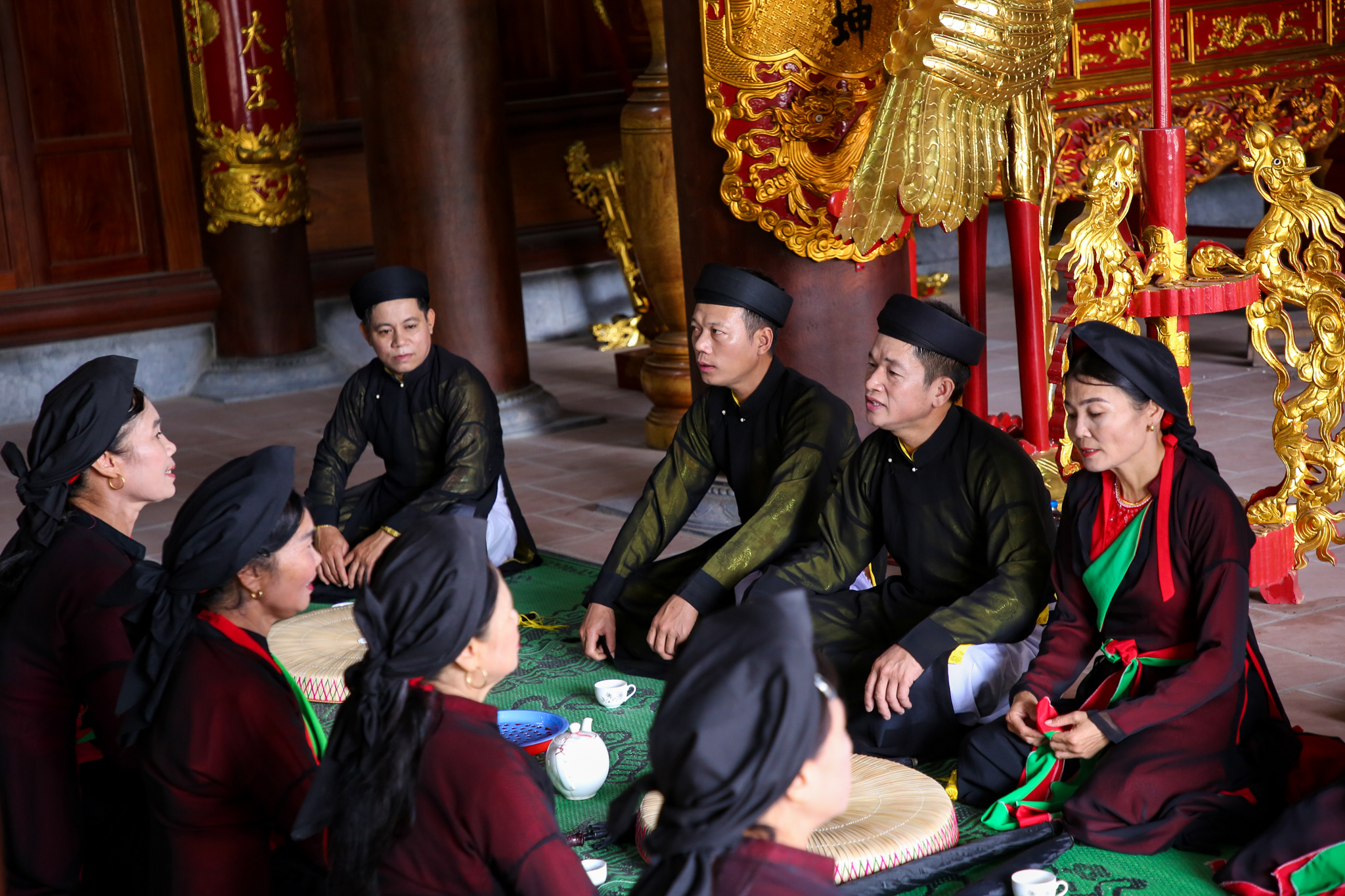
According to the ‘old artisan-farmer’, this form of reciprocal singing has enriched the old quan ho treasure. Many male and female singers have to turn themselves into fieldworkers and collectors.
In addition to preservation, the story of inspiring the young generations is also given special attention. The good news is that in recent years, the quan ho clubs such as Noi Ninh, Ha Lat … have been recruiting more and more child members. In the clubs, if the children often show interest when learning a new song and melody and remember the lyrics very quickly, the older members have the strength in showing the “deep affection” of quan ho by their own experiences in life. The Viet Yen people also started to get used to the ‘boy and girl singers with four-panel traditional dresses, turbans and conical hats singing quan ho songs on every weekend night.
The Viet Yen people also started to get used to the ‘boy and girl singers with four-panel traditional dresses, turbans and conical hats singing quan ho songs on every weekend night.
Nguyen Dai Luong, Vice Chairman of the People’s Committee of Viet Yen district, said that the district also actively coordinated with press agencies in promoting the local tourism development potential; building websites and social media accounts to introduce the value of relic sites in the district to people inside and outside the country (for example, the “Viet Yen – the Land of Heritage” column on the district’s portal and the “Viet Yen – the land of quan ho” column on Bac Giang Newspaper).
The district People’s Committee organizes an annual quan ho singing festival as part of the Bo Da Pagoda Festival. In the 2000-2019 period, the district’s quan ho singing festival was held 19 times. A representative of the Culture and Sports Centre of Viet Yen district said that the locality recorded 19 variant readings of quan ho in the Trung Dong quan ho village. This is a specially valuable document that needs to be preserved, promoted and transmitted in the future. In addition, Viet Yen district has also implemented the project “Restoring the reciprocal quan ho singing style” in all villages along the Cau River in Tien Son, Van Ha, Ninh Son, Quang Minh, Quang Chau and Van Trung communes and Nenh township. The preservation and promotion of traditional cultural values have received the authorities’ due attention, toward realizing the goal of developing exemplary new-style rural areas sustainably./.
